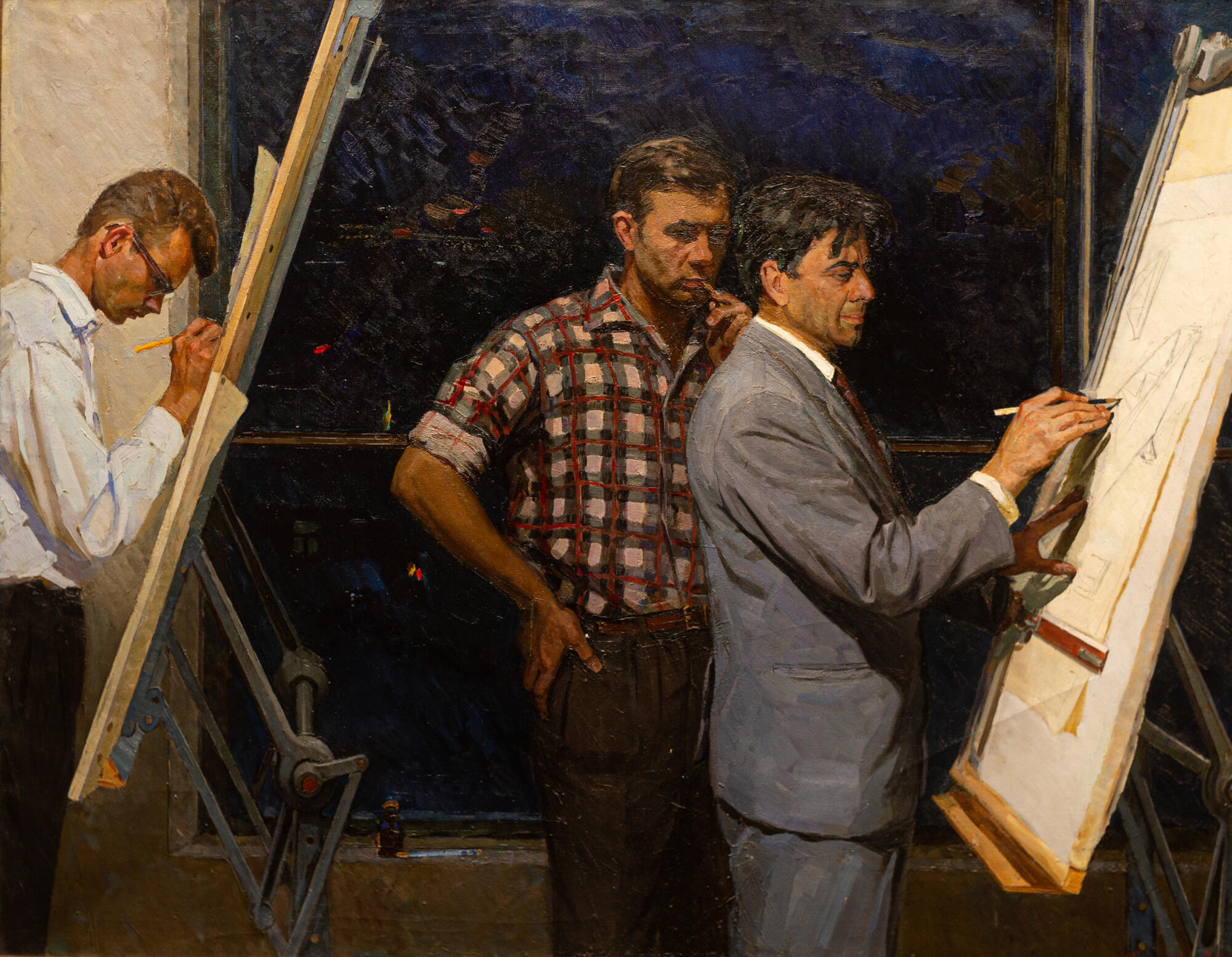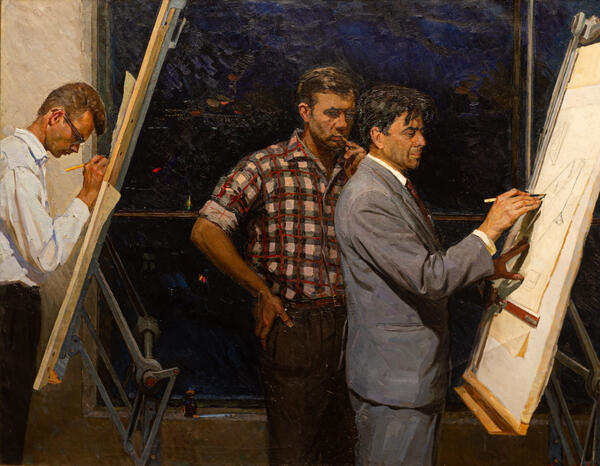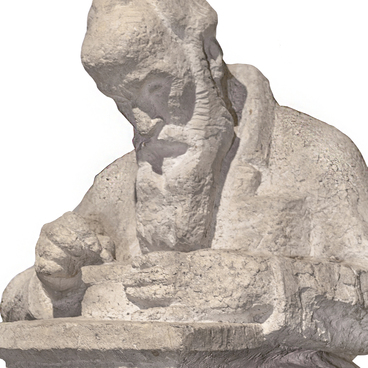The painting ‘Uralmash Engineers’ depicts real people — engineers and technicians of the Uralmash plant. The right side of the picture shows the enthusiastic plant’s chief engineer Boris Satovsky, the famous creator of the walking excavator. His assistants are placed more to the left, with one of them closely observing the chief engineer’s work, and the other one carrying out his own calculations. Nina Kostina tried to avoid excessive glorifying, so she chose to picture the characters’ usual work routine.
Kostina painted the scene in a realistic manner: she captured the volumes of the figures with the help of light and shadow effects, arranged the linear perspective, as well as reflected the personality traits of each character. The straight diagonals of the drawing instruments emphasize the harmony of the workers’ synchronized movements and thoughts.
In the 1960s, Soviet science and production experienced an unprecedented boost, and in part, it was due to hardworking and talented engineers. Hundreds of thousands of specialists were employed in institutes of applied research, design bureaus, and laboratories of plants and factories. The prestige of being an engineer was higher than ever, and many painters celebrated the profession in their paintings.
Another reason why Nina Kostina chose this particular subject matter was the fact that she was born in Uralmash (the famous working-class district of Sverdlovsk). Her father worked as a turner at the local production facility for 40 years. Nina grew up surrounded by industrial landscapes and spent her days playing and walking there. That is why she chose local engineers as the characters for her painting. Kostina’s artwork includes many canvases exploring the theme of plant workers, such as her wide-known paintings “Morning at Uralmash”, “Uralmash Workers”, and “Skillful Crew”.
However, her canvases were not dedicated to only that theme. Kostina expended a lot of her time and effort painting the nature of the Urals. She depicted many existing places in her paintings such as “Winter in Sysert”, “Autumn on Chusovaya”, “Evening on Flus”, “Fog over Utka”, “Winter in Shartash”, “Iset River” and others.
Kostina painted the scene in a realistic manner: she captured the volumes of the figures with the help of light and shadow effects, arranged the linear perspective, as well as reflected the personality traits of each character. The straight diagonals of the drawing instruments emphasize the harmony of the workers’ synchronized movements and thoughts.
In the 1960s, Soviet science and production experienced an unprecedented boost, and in part, it was due to hardworking and talented engineers. Hundreds of thousands of specialists were employed in institutes of applied research, design bureaus, and laboratories of plants and factories. The prestige of being an engineer was higher than ever, and many painters celebrated the profession in their paintings.
Another reason why Nina Kostina chose this particular subject matter was the fact that she was born in Uralmash (the famous working-class district of Sverdlovsk). Her father worked as a turner at the local production facility for 40 years. Nina grew up surrounded by industrial landscapes and spent her days playing and walking there. That is why she chose local engineers as the characters for her painting. Kostina’s artwork includes many canvases exploring the theme of plant workers, such as her wide-known paintings “Morning at Uralmash”, “Uralmash Workers”, and “Skillful Crew”.
However, her canvases were not dedicated to only that theme. Kostina expended a lot of her time and effort painting the nature of the Urals. She depicted many existing places in her paintings such as “Winter in Sysert”, “Autumn on Chusovaya”, “Evening on Flus”, “Fog over Utka”, “Winter in Shartash”, “Iset River” and others.



